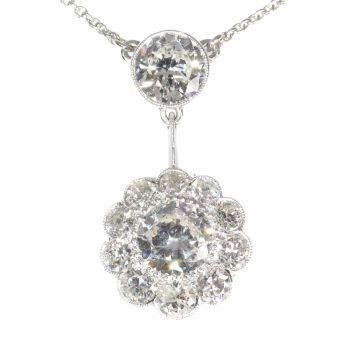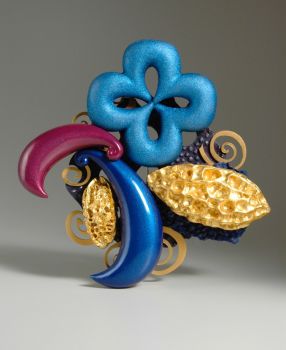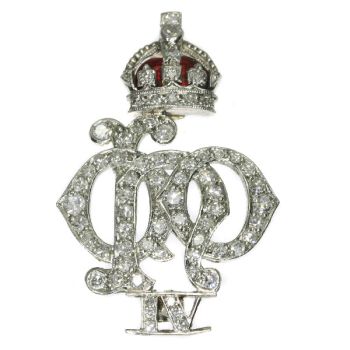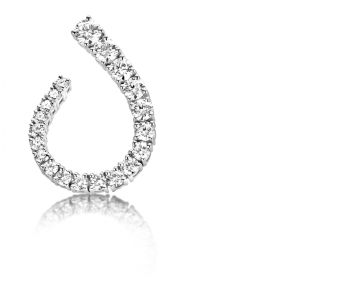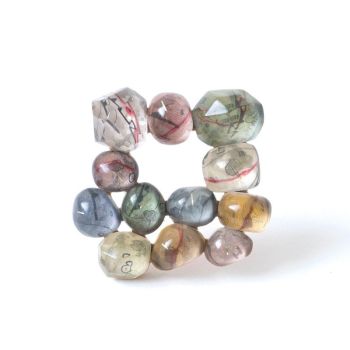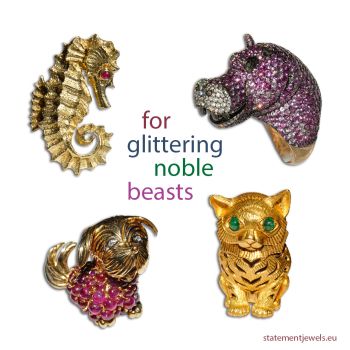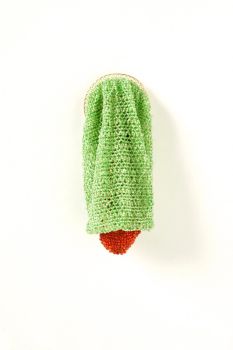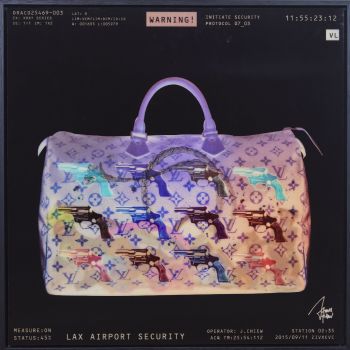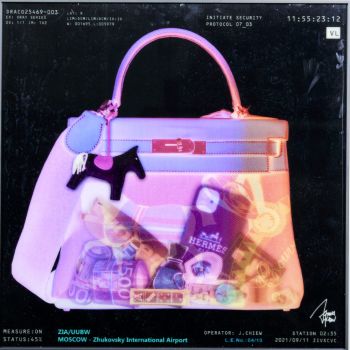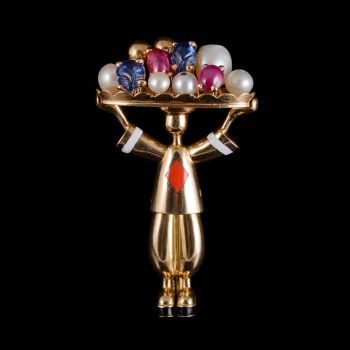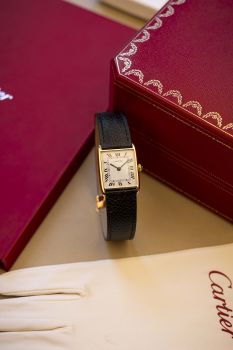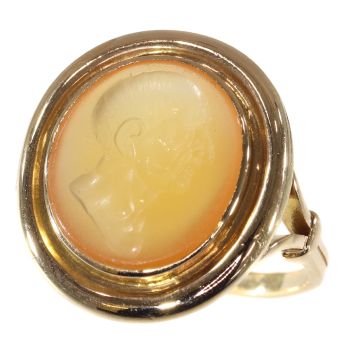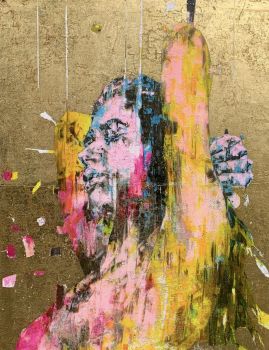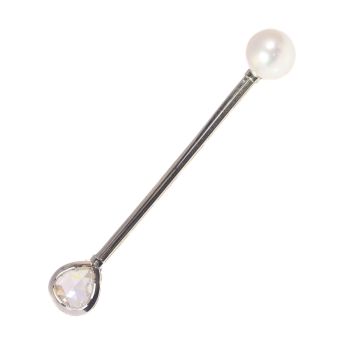Alfinete de ouro antigo em forma de espada com joias 1880
Artista Desconocido
Oro
€ 2.650
Adin Fine Antique Jewellery
- Sobre la obra de arte
Antique jewelry object group: pin/brooch
Condition: very good condition
- (more info on our condition scale)
Country of origin: unknown
Style: Victorian - Victorian decorative arts refers to the style of decorative arts during the Victorian era. The Victorian era is known for its eclectic revival and interpretation of historic styles and the introduction of cross-cultural influences from themiddle east and Asia in furniture, fittings, and Interior decoration. Victorian design is widely viewed as having indulged in a regrettable excess of ornament. The Arts and Crafts movement, the aesthetic movement, Anglo-Japanese style, and Art Nouveaustyle have their beginnings in the late Victorian era.
- See also: Victorianor more info on styles
Style specifics: The Grand Victorian Period - Experts divide the reign of Queen Victoria, also called The Victorian era (1837 - 1901) into three periods of about twenty years each; The Romantic Victorian Period (1837 - 1860), The Grand Victorian Period (1860 - 1880),and the Late or Aesthetic Victorian Period (1880 - 1901).
We consider this to be of the Grand Victorian Period.
This second Victorian period is famous for its ostentatious pieces set with pearls and diamonds (from South Africa). From ca. 1850 wealthy English had reported about jewelry from India and Japan, which heavily inspired the jewelers of this period. Thisperiod also corresponds with the death of Queen Victoria's husband King Albert making mourning jewelry (set with heavy dark stones) the type of jewelry specific for this period.
Period: ca. 1880
- (events & facts of this era, poetry of this era, fashion of this era)
Theme: Sword - A sword is a bladed weapon (edged weapon) of more than 50 cm (20 inch) in overall length used primarily for cutting or thrusting. All have a blade and a handle, known as the hilt. Blades may be straight, curved, single-edged, double-edged or justpointed. Hilts vary considerably in style and length, and may include protective guards for the hand. Detailed design depends on the historical epoch or the geographical region under consideration.
The use of a sword is known as swordsmanship or fencing. Basic principles have remained fairly constant through the centuries, but the actual techniques vary among cultures and periods as a result of the differences in blade design and purpose. The names given to many swords in mythology, literature, and history reflect the high prestige of the weapon and the wealth of the owner.
The sword is said to be the emblem of military honor and should incite the bearer to a just and generous pursuit of honor and virtue. It is symbolic of liberty and strength. In the Middle Ages, the sword was often used as a symbol of the word of God. Freemasonry also uses swords on some rituals.
The word sword comes from the Old English sweord, cognate to Old High German swert, Old Norse sverð, from a Proto-Indo-European root *swer- "to wound, to cut". (from: < a href="http://en.wikipedia.org/wiki/Sword" target="top">Wikipedia)
Material: 18K yellow gold (touchstone tested)
- (more info on precious metals)
Diamond(s): 15 old mine brilliant cut diamonds with an estimated weight of ± 0.32ct. (colour and clarity: J/M, si/i).
Eight rose cut diamonds. We do not have the weight of the diamonds which is normal in our trade when it comes to rose cuts.
- All diamond weights, color grades and clarity are approximate since stones are not removed from their mounts to preserve the integrity of the setting.
- All diamonds we offer are screened by the IJGC - lab (www.ijgc-worldwide.com) for whether they are natural or synthetic, and all diamonds in this jewel are 100% guaranteed to be natural.
Precious stones: Twelve rubies
Three pearls
- All color stone weights are approximate since stones are not removed from their mounts to preserve the integrity of the setting.
- It is a very common practice to treat gemstones to intensify their clarity or colour. The item in question has not been tested in this regard.
Birthstones: Diamond is the birthstone (or month stone) for April, ruby for July and pearl for June.
- (more info on birthstones)
Hallmarks: No trace.
- (more info on hallmarks)
Dimensions: width 9,00 cm (3,54 inch) - See picture with a ruler in cm and inches
Weight: 6,00 gram (3,86 dwt)
Adin Reference Nº: 21092-0169
Copyright photography: Adin, fine antique jewellery
yellow gold jewelry, jewelry with diamond, jewelry with rose cut diamonds, jewelry with ruby, jewelry with pearls, latest acquisitions,
antique jewelry, estate jewelry, vintage jewelry or modern jewelry
Jewelry with birthstones (or month stones) for:
January - February - March - April - May - June - July
August - September - October - November or December.
Additional information:
jewelry glossary - wall of fame - visit us in Antwerp - subscribe to our mailinglist.
What is antique jewelry? - What is estate jewelry? - What is vintage jewelry?
- Sobre el artista
Puede suceder que un artista o creador sea desconocido.
Algunas obras no deben determinarse por quién está hecho o por (un grupo de) artesanos. Algunos ejemplos son estatuas de la Antigüedad, muebles, espejos o firmas que no son claras o legibles, pero también algunas obras no están firmadas en absoluto.
También puedes encontrar la siguiente descripción:
•"Atribuido a …." En su opinión, probablemente una obra del artista, al menos en parte.
•“Estudio de….” o “Taller de” En su opinión, una obra ejecutada en el estudio o taller del artista, posiblemente bajo su supervisión
•“Círculo de…” En su opinión, una obra del período del artista que muestra su influencia, estrechamente asociado con el artista pero no necesariamente su alumno.
•"Estilo de …." o “Seguidor de…”. En su opinión, una obra ejecutada al estilo del artista pero no necesariamente por un alumno; puede ser contemporáneo o casi contemporáneo
•"Manera de …." En su opinión una obra al estilo del artista pero de fecha posterior
•"Después …." En su opinión, una copia (de cualquier fecha) de una obra del artista
•“Firmado…”, “Fechado…” o “Inscrito” En su opinión, la obra ha sido firmada/fechada/inscrita por el artista. La adición de un signo de interrogación indica un elemento de duda.
•“Con firma…”, “Con fecha…”, “Con inscripción…” o “Lleva firma/fecha/inscripción” en su opinión la firma/fecha/inscripción ha sido añadida por alguien que no es el artista
¿Está interesado en comprar esta obra de arte?
Related artworks
- 1 - 4 / 12
Artista Desconocido
Broche Art Déco temprano1920
Precio a consultarAns Hemke-Kuilboer Juwelier & Antiquair
1 - 4 / 24- 1 - 4 / 8
- 1 - 4 / 24
- 1 - 4 / 12


















